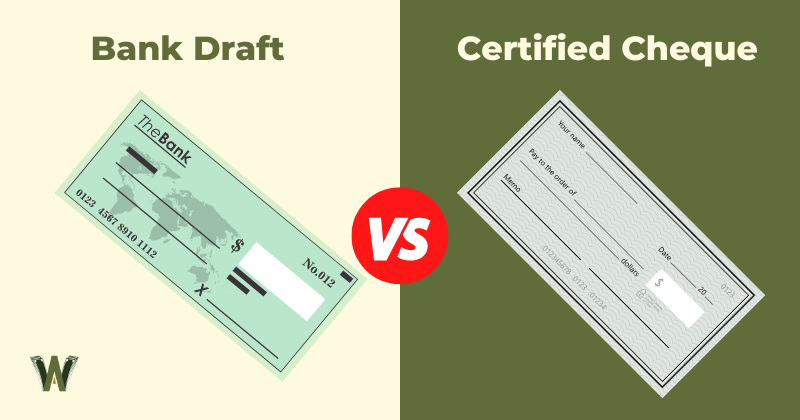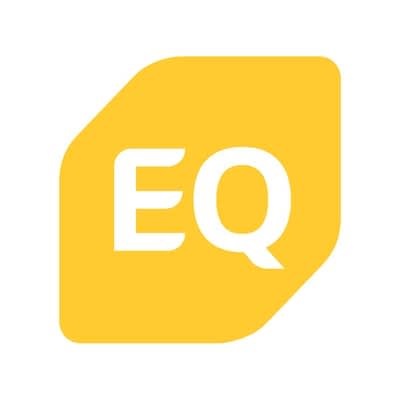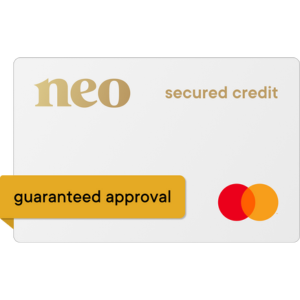Bank drafts and certified cheques are among the most rarely used methods of payment in Canada.
Both methods are used for transferring sums of money (unusually large amounts) from one bank account to another individual or account.
Unlike regular cheques, which can “bounce,” a certified cheque or bank draft verifies that the funds are available by setting them aside.
Both of these payment methods are very similar. However, there are a few differences. Below, we’ll take a closer look at the difference between a bank draft vs certified cheque in Canada.
What Is A Bank Draft In Canada?
Today, bank drafts are used all the time. However, most of today’s bank drafts occur online and can be performed through your bank’s online portal or a third-party money transfer service.
That being said, some instances may call for a traditional paper bank draft.
A bank draft is a form that an account holder fills out, ordering their bank to withdraw funds from their account and send the amount to another bank account.
Essentially, it authorizes money to be transferred between two different bank accounts. Some instances that may require this include:
- Purchasing a plot of land
- Purchasing a recreational vehicle or motorcycle
- Paying for an item won an auction
- Paying for a car
- Making a downpayment on your mortgage
More often than not, bank drafts are primarily handled online. It’s more secure, more accurate, and quicker than making a trip to the bank to sign papers. That being said, paper bank drafts may be used periodically.
Typical costs for a bank draft in Canada range from $5 to $15, though some banks might charge more. Some banks also offer a lower fee or no fee at all for premium account holders.
Security Features of Bank Drafts in Canada
The bank, rather than an individual, is effectively issuing the cheque, providing a higher level of security from the start. Here are some of the security features typically associated with bank drafts in Canada:
- Pre-authorized Payment: A bank draft is a pre-authorized payment, meaning the funds are immediately withdrawn from your account when the bank issues the draft. This guarantees the recipient that the payment will not bounce due to insufficient funds.
- Payable to a Specific Party: A bank draft is made payable to a specific party, adding a layer of security. This limits the ability of others to cash the draft if it is lost or stolen.
- Signature of Bank Official: Bank drafts are typically signed by a bank official or stamped by the bank, which is a security measure that’s hard to replicate.
- Watermarking and Holograms: Some banks use watermarks, holograms, heat-sensitive ink, or other security features that are hard to forge to protect against counterfeit drafts.
- Micro-printing: Micro-printing involves printing text that is so small it is almost invisible to the naked eye. If someone tries to photocopy or scan the draft, the micro-printing usually becomes visible and the copy can be identified as a fake.
- Unique Serial Number: Each bank draft carries a unique serial number that the bank can use to verify its authenticity.
- Cross-checked Records: When a bank draft is presented for payment, the bank will cross-check its records for the serial number, amount, payee, and other details. This makes it more difficult for a fraudster to alter a bank draft.
What Is A Certified Cheque In Canada?

A certified cheque is very similar to a bank draft. To obtain a certified cheque, you’ll need to visit your bank in person and ask them to write one.
When you write a certified cheque, the bank will automatically set the funds aside, thereby certifying that the money is available to the recipient.
Traditional paper cheques can bounce if the recipient deposits the cheque and the cheque issuer doesn’t have the correct funds. The issuer’s bank will usually charge the account holder a fee for the bounced cheque, and the recipient will probably be unhappy.
A certified cheque solves this problem by giving the recipient 100% confidence that the funds are available.
Once the recipient deposits the cheque into their account, the funds that your bank set aside will be transferred. If the certified cheque is not deposited, the set-aside funds will be transferred back into your bank account (although there may be a delay).
You can generally expect to pay anywhere from $10 to $20 for a certified cheque at most Canadian banks. Some banks may offer a lower fee or waive the fee altogether for premium account holders.
Security Features of Certified Cheques
Certified cheques have several safety measures which are similar to bank drafts:
- Pre-verified Funds: The primary security feature of a certified cheque is that the funds are already verified by the bank. This provides assurance to the recipient that the cheque will not bounce due to insufficient funds.
- Bank’s Guarantee: The bank’s guarantee is another safety measure. It means that if for any reason the cheque cannot be cashed, the bank will take responsibility for covering the amount.
- Signature Verification: Certified cheques typically require the account holder’s signature, which the bank can compare with its records to confirm authenticity.
- Unique Serial Numbers: Each certified cheque carries a unique serial number, which the bank can cross-check with its records to confirm that it is valid.
- Security Paper: Certified cheques are often printed on security paper, which can have features like watermarks or heat-sensitive ink to deter fraud.
- Microprinting and Other Anti-Counterfeiting Measures: Certified cheques often include microprinting, which becomes visible if the cheque is photocopied or scanned, as well as other anti-counterfeiting measures that make it difficult to create a convincing fake.
Bank Draft vs. Certified Cheque: Key Differences
Both bank drafts and certified cheques are regarded as more secure methods of exchanging money.
These methods of payment eliminate any doubt that the seller or recipient of the cheque may have about your ability to make good on your payment.
They’re also a lot more secure than carrying around a large wad of cash in your pocket!
The main difference between a bank draft and a certified cheque is that bank drafts are issued directly by your bank to the recipient and are performed immediately.
Conversely, certified cheques are issued by the account holder, and the funds won’t be moved until the cheque is deposited by the recipient.
Here’s a quick breakdown of the similarities and differences between bank drafts and certified cheques in Canada:
| Bank Draft | Certified Cheque |
| Remove funds from your account, instantly transferring them to the recipient | Removes funds from your account, setting them aside until the recipient deposits the cheque |
| Used to transfer sums of money directly from one bank account to another | Used to transfer sums of money directly from one bank account to another individual or business |
| Bank charges a small convenience fee | Bank imposes a convenience fee |
| Can be performed online or with a traditional paper draft | Only available in physical form and must be obtained from the bank in-person |
Bank Draft vs Certified Cheque In Canada: What’s Better?
At this point, you may be wondering which of these options is a better means of payment. Both are secure, verified ways to exchange money and are typically used to purchase costly items, pay for an invoice, or in business deals.
Transferring money via a bank draft is a bit quicker than issuing a certified cheque. This is especially true if you’re executing the bank draft online, as you don’t even have to leave your house.
However, once you send a bank draft, it cannot be unsent. It’s a lot more final than a certified cheque.
When you ask your bank to issue a certified cheque, the funds will be immediately set aside.
However, they won’t be transferred to the recipient until the cheque is issued and the recipient deposits the cheque into their bank account.
If you change your mind at the last minute, you can just withhold the cheque and cancel it through your bank.
Here’s an example of an instance where using a certified cheque could be beneficial:
You see a used car that you want to buy for $10,000 on Facebook Marketplace. You’re pretty sure it’s a good deal, but you want to take a look in person first.
So, you ask your bank to write a certified cheque for $10,000. If you decide to buy the car, the seller will accept this method of payment because the funds are verified.
After looking at the condition of the car, you realize that it’s not worth the money. So you back out of the sale and explain that you don’t want to buy the car.
Now, you can return to your bank and ask them to cancel the certified cheque. The money that was set aside will be released back into your account.
Bank Draft vs. Certified Cheque vs. Money Order
Along with bank drafts and certified cheques, money orders are another common method of payment used to safely transfer money and pay for goods. A money order is very similar to a certified cheque, except that money orders are paid for rather than issued.
A certified cheque must be obtained directly through your bank and involves setting money in your account aside.
Although money orders can be obtained from your bank, they’re often purchased through third-party organizations like Western Union. The money order allows the purchaser to name a recipient.
The recipient can then deposit the money order into their account just like they would with a traditional paper cheque.
Money orders can be purchased using either cash or your debit card. You’ll usually be required to pay a small fee (typically less than $5) for the money order on top of the money order amount.
Money orders are better suited for lower-value exchanges, while bank drafts and certified cheques are better suited for transferring large sums of money.
Money orders have an amount limit (usually $500), which means you’ll have to pay the money order fee for each increment of $500.
If you want to pay $5,000, you would need to purchase ten money orders and pay ten fees. A certified cheque or bank draft, by contrast, would allow you to transfer the complete amount all at once.
Conclusion

Bank drafts and certified cheques aren’t as commonly used as they were in the past, thanks to digital money transfer services. However, it’s still a good idea to know how these methods of payment work in case you’re ever asked to present one.
My favourite way to send money to people is through Wise. The company is compatible with over 50 global currencies and has some of the lowest transfer fees on the market.
You can read my full review detailing my experience with Wise here.





